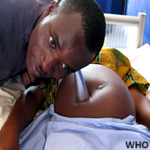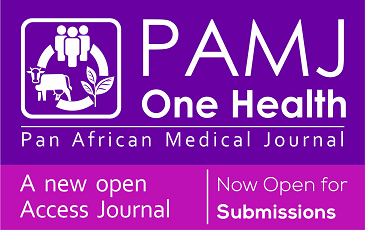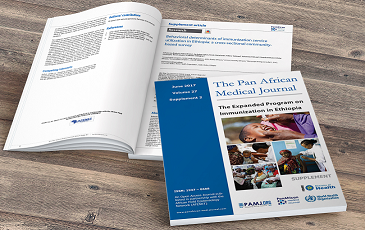Luxation radio carpienne ouverte pure: à propos d’un cas
Adil El Alaoui, Mouhcine Sbiyaa
Corresponding author: Adil El Alaoui, Service de Chirurgie Traumato-Orthopédique (A), CHU Hassan II, Fès, Maroc 
Received: 12 Dec 2015 - Accepted: 03 Jan 2016 - Published: 01 Feb 2016
Domain: Clinical medicine
Keywords: luxation, pure, radiocarpienne
©Adil El Alaoui et al. Pan African Medical Journal (ISSN: 1937-8688). This is an Open Access article distributed under the terms of the Creative Commons Attribution International 4.0 License (https://creativecommons.org/licenses/by/4.0/), which permits unrestricted use, distribution, and reproduction in any medium, provided the original work is properly cited.
Cite this article: Adil El Alaoui et al. Luxation radio carpienne ouverte pure: à propos d’un cas. Pan African Medical Journal. 2016;23:23. [doi: 10.11604/pamj.2016.23.23.8622]
Available online at: https://www.panafrican-med-journal.com/content/article/23/23/full
Luxation radio carpienne ouverte pure: à propos d’un cas
Pure radio carpal dislocation: a case report
Adil El Alaoui1,&, Mouhcine Sbiyaa1
1Service de Chirurgie Traumato-Orthopédique (A), CHU Hassan II, Fès, Maroc
&Auteur correspondant
Adil El Alaoui, Service de Chirurgie Traumato-Orthopédique (A), CHU Hassan II, Fès, Maroc
Radio carpal dislocation is rare, its frequency is 0.2%.
The pure form is an exceptional entity. We provide a
typical observation of this lesion. 32 years old patient,
victim of a road traffic accident, admitted to the emergency.
The examination of the left arm objectified
a cross wound next to the palm side of the left wrist
(A), the neuro vascular examination shows no damage.
Radiography’s front and profile views of the left wrist, showed
a pure left posterior radio carpal dislocation (B).
The patient was operated 2 hours after the trauma,
under locoregional anesthesia. After the reduction of
the radiocarpal dislocation, the patient received a
plug-lunar radio and radio-scaphoid then a transverse
racking radio-ulnar . The radiography of control confirmed
the reduction of the dislocation (C, D).
The patient underwent wrist immobilization for 6 weeks,
followed by a pin ablation (E) then sessions of reeducation.
After a backward movement of 18 months, the evolution was
good, with a normal
mobility of the wrist.
Key words: Dislocation, pure, radio carpal
La luxation radio carpienne est rare, sa fréquence est de 0,2% des luxations. La forme pure reste une entité exceptionnelle. Nous rapportons une observation typique de cette lésion. Il s'agit d'un patient âgé de 32 ans, victime d'un accident de la voie public. Admis aux urgences ou un examen du membre supérieur gauche a objectivé une plaie transversale en regard de la face palmaire du poignet gauche (A), l'examen vasculo-nerveux est sans particularités. Une radiographie du poignet gauche face et profil a mis en évidence une luxation postérieure pure radio carpienne gauche (B). Le patient a été opéré 2 heures après le traumatisme au bloc opératoire, sous anesthésie locorégionale. Après la réduction de la luxation radio carpienne le patient a bénéficié d'un embrochage radio-lunaire et radio-scaphoidienne puis un embrochage transversale radio-lunaire. La radiographie de contrôle a confirmé la réduction de la luxation (C, D). Le patient a bénéficié d'une immobilisation du poignet pendant 6 semaines, suivie d'une ablation de broches (E) puis des séances de rééducation. Après un recul de 18 mois, l'évolution était bien, avec une mobilité normale du poignet.
Figure 1: (A) image montrant une luxation ouverte radio carpienne; (B) radiographie du poignet gauche montrant une luxation pure postérieure radio carpienne; (C) radiographie de contrôle du poignet face après réduction de la luxation et stabilisation du poignet par embrochage; (D) radiographie du poignet de profil après réduction de la luxation et stabilisation du poignet par embrochage; (E) radiographie du poignet gauche après ablation des broches
Search
This article authors
On Pubmed
On Google Scholar
Citation [Download]
Navigate this article
Similar articles in
Key words
Tables and figures
 Figure 1: (A) image montrant une luxation ouverte radio carpienne; (B) radiographie du poignet gauche montrant une luxation pure postérieure radio carpienne; (C) radiographie de contrôle du poignet face après réduction de la luxation et stabilisation du poignet par embrochage; (D) radiographie du poignet de profil après réduction de la luxation et stabilisation du poignet par embrochage; (E) radiographie du poignet gauche après ablation des broches
Figure 1: (A) image montrant une luxation ouverte radio carpienne; (B) radiographie du poignet gauche montrant une luxation pure postérieure radio carpienne; (C) radiographie de contrôle du poignet face après réduction de la luxation et stabilisation du poignet par embrochage; (D) radiographie du poignet de profil après réduction de la luxation et stabilisation du poignet par embrochage; (E) radiographie du poignet gauche après ablation des broches











